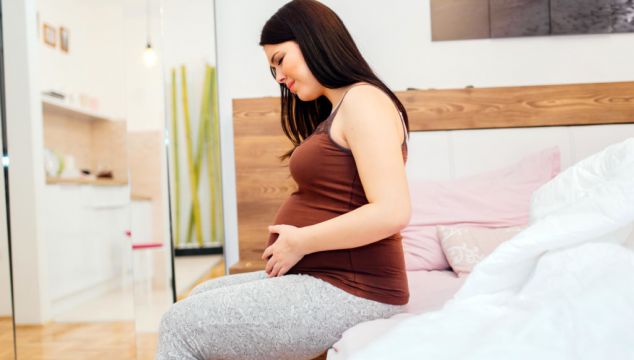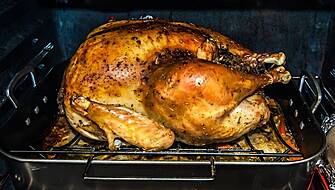A significant proportion of women experience problems linked to pelvic floor damage up to 26 years after giving birth, new research suggests – including urinary and faecal incontinence and pelvic floor prolapse.
The study by Glasgow Caledonian University (GCU), which involved 8,000 women who’d given birth in 1993-1994, found 61% had recently experienced urinary incontinence, 22% had faecal incontinence and 17% had symptoms pointing to prolapse. Rates for mothers who’d had a Caesarean delivery were slightly lower, at 53%, 16% and 9% respectively
So, what exactly is the pelvic floor, how does it get damaged during pregnancy, and is there anything you can do to restore it?
What is the pelvic floor?

Mari-Carmen Sanchez-Morris, former nurse turned personal trainer and women’s health expert, explains that the pelvic floor is a layer of muscles and connective tissue that stretches from the pubic bone to the tailbone, which acts a bit “like a hammock”. These muscles play a crucial role in supporting the bladder, bowel and – in females – the uterus.
Hollie Grant, founder of pre- and post-natal fitness platform The Bump Plan, agrees, adding: “There are three holes within the pelvic floor, the urethra, vagina and anus. The pelvic floor muscles wrap quite tightly around these holes to help keep the passages closed.
“These muscles, just like many other muscles of the body, can be voluntarily contracted and hence strengthened. The difficulty for many women is that without being able to ‘see’ these muscles, it can be hard to know if they are activating the correct ones.”
How can pregnancy and giving birth damage the pelvic floor?
Pregnancy puts extra pressure on pelvic floor structures, and hormonal changes can also have an impact, leading to a higher chance of weakening.
During vaginal births, the baby’s head passing through the vagina can stretch and potentially tear muscles, with prolonged pushing straining them too.
“For those who have deliveries that involve instruments like forceps or vacuum, these can also increase the risk of pelvic floor damage due to the pressure and force they can use,” adds Sanchez-Morris.
“For C-sections, the abdominal incision can affect pelvic floor nerves, leading to possible dysfunction. Much like with vaginal births, C-sections can also damage the pelvic floor due to the pressure from the baby’s weight and position.”
What problems can women be left with?
There are lots of different symptoms women can struggle with due to pelvic floor damage or dysfunction, including urinary or faecal incontinence. Prolapse is another issue that can occur.
“Women can also struggle with urinary or faecal urgency, which means they have less time to make it to the bathroom. This can be really stressful and anxiety-provoking,” says pelvic health physiotherapist, Clare Bourne. “Pelvic organ prolapse is much more common than we realise, and is where one or more of the pelvic organs (bladder, bowel and womb) move downwards into the vagina due to changes to the support of the vaginal walls.
“This can feel like a heaviness or dragging sensation in the vagina, and it can significantly impact a woman’s mental health. The support and awareness around prolapse can be very poor and leave women feeling alone,” she adds.
“Another common symptom can be pain with intercourse. This is not exclusive to after birth, however it can be a new symptom due to scar tissue from perineal tears, or due to temporary dryness due to altered hormones postpartum, especially if breastfeeding. This is not ‘in your head’ and there is lots that can be done to help.”
Can you prevent pelvic floor damage in pregnancy?

The good news is, there is lots women can do to help both prevent and improve pelvic floor weakness. Pelvic floor exercises are a great way to prepare – think of it as training the muscles ahead of birth. Kegels are a popular method, which involve squeezing the muscles, while other physio exercises can also help.
“By strengthening these muscles, you can help reduce the risk of dealing with physical issues from a weakened pelvic floor post-birth,” says Sanchez-Morris. “Perineal massages can also be great, with regular massages helping to increase tissue elasticity and possibly reduce the risk of tears during birth. It is best to consult your midwife for guidance on techniques that will be best.
“If you are worried about your pelvic floor head of birth, it is best to consult a health professional who will be able to give tailored advice.”
What can be done post-birth to help?
When you feel comfortable after birth, you can incorporate pelvic floor exercises and deep breathing into your routine (always seek advice from your doctor or midwife if you experienced any complications or severe tears).
This will also help “improve Diastasis recti, a separation of the abdominal muscles”, says Sanchez-Morris.
“There are exercises that can help strengthen these muscles but the hardest part for many people is first identifying the right muscles to target. The best way to do this is to imagine you need to stop the wind – bring the anus to the vagina (closing the gap) and then gently lift from front to back,” she adds.
“The muscles you feel contract as you do this are the pelvic floor muscles. The key to exercising these muscles is to use the ‘squeeze and release’ technique. To do this, contract the muscles for five seconds (it should feel like a tightening and lifting process) then relax them for five seconds, remembering to breathe throughout.
“As you practice this and the muscles strengthen, steadily increase the duration of each contraction, the number of repetitions, and the positions in which you perform the exercises. Like with any strength-building, remember consistency is key.”
Seek professional advice if you are experiencing symptoms and incontinence that doesn’t improve or is impacting your quality of life – these things are very common and help is available.







